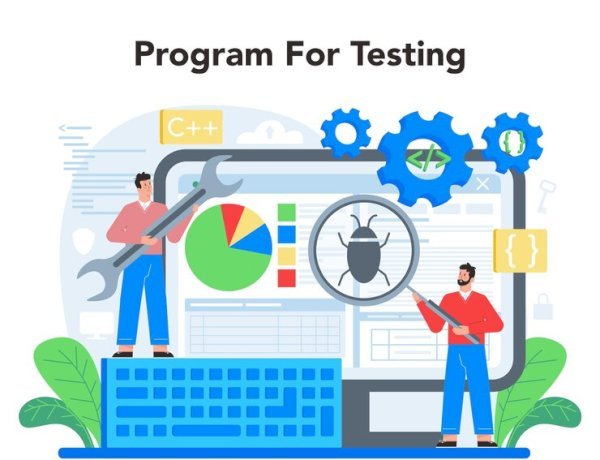Dangerous Chemicals in Everyday Products: What You Need to Know
Discover the hidden dangers of harmful chemicals in everyday products. Learn about pesticides, phthalates, flame retardants, BPA, and PFAS, and how to reduce your exposure to protect your health.

Did you know that long-term exposure to everyday chemicals could cause serious health problems, like hormonal disruption and cancer?
Despite the vast number of chemicals used in the U.S., only a small fraction has been rigorously tested for safety.
According to the Environmental Protection Agency (EPA), over 40,000 chemicals are currently in use in consumer products, yet fewer than 1% have undergone comprehensive safety evaluations. This leaves consumers largely uninformed about potential risks.
Dr. Leo Trasande, an expert in children’s environmental health and author of Sicker Fatter Poorer, stresses the importance of understanding the dangers of five key groups of synthetic chemicals: pesticides, phthalates, flame retardants, bisphenols (like BPA), and PFAS chemicals. While complete avoidance may be impossible, reducing exposure is a practical way to minimize harm.
In this article, we'll explore these five groups and share practical steps to reduce your exposure
1. Pesticides: The Hidden Risk in Food

Pesticides are substances designed to control pests, weeds, and fungi, commonly used in agricultural production. While their role in ensuring food supply is undeniable, their presence in the food chain raises significant health concerns.
According to the USDA’s Pesticide Data Program, residues from pesticides are found in up to 70% of fresh produce sold in the United States. The Environmental Working Group (EWG) publishes an annual list known as the “Dirty Dozen,” ranking produce with the highest levels of pesticide contamination.
|
Top 5 Pesticide-Contaminated Foods |
Pesticide Residue (%) |
|
Strawberries |
99% |
|
Spinach |
97% |
|
Kale |
92% |
|
Apples |
90% |
|
Grapes |
88% |
Are They Safe?
While the EPA claims that regulatory advancements have led to safer pesticides, independent research suggests otherwise. The Agricultural Health Study, which has tracked nearly 90,000 farmers and their spouses since the 1990s, links pesticide exposure to various serious health conditions, including:
- Increased cancer risk (prostate, lung, thyroid, bone marrow)
- Neurological diseases (Parkinson’s disease, cognitive decline)
- Respiratory issues (asthma, chronic bronchitis)
- Endocrine disruption (altered hormone levels, reproductive issues)
2. Phthalates: The Invisible Hormone Disruptors

Phthalates are a group of chemicals used to make plastics more flexible, acting as solvents and binding agents
. They are found in:
- Personal care products (shampoo, perfume, nail polish)
- Vinyl flooring and wallpaper
- Medical devices (IV tubing, blood storage bags)
- Food packaging
- Toys and baby products
Due to their widespread use, exposure is nearly unavoidable. The Centers for Disease Control and Prevention (CDC) has detected phthalates in the urine of nearly every American tested, with higher levels in women and children.
|
Population Group |
Phthalate Detection Rate (%) |
|
General Population |
97% |
|
Women |
99% |
|
Children |
98% |
Are They Safe?
Studies suggest that phthalates disrupt the endocrine system, affecting hormone levels. According to the National Research Council, phthalate exposure has been linked to:
- Reproductive and genital defects in newborns
- Reduced sperm count and fertility issues in men
- Increased risk of obesity and diabetes
- Altered brain development in children
3. Flame Retardants: The Hidden Fire Safety Hazard

Flame retardants are chemicals added to materials to reduce flammability and slow down the spread of fire. While this might seem beneficial, these chemicals have been linked to numerous health risks due to their tendency to accumulate in household dust and be absorbed through inhalation, ingestion, and skin contact.
Flame retardants are commonly found in:
- Furniture and upholstery – sofas, mattresses, cushions
- Electronics – televisions, laptops, mobile phones, cables
- Carpets, curtains, and textiles – home decor and insulation materials
- Baby products – car seats, toys, nursing pillows
Since flame retardants do not break down easily, they persist in the environment for years. A report by Consumers Reports found that 97% of Americans have flame retardants in their bloodstream, with children having nearly three times the levels found in adults due to frequent hand-to-mouth behavior.
Are They Safe?
Research has strongly linked flame retardants to severe health concerns, including:
- Thyroid and endocrine disruption – Alters hormone levels, leading to developmental and reproductive issues.
- Neurodevelopmental delays in children – Exposure is associated with lower IQ, ADHD, and behavioral problems.
- Increased cancer risks – Studies link flame retardants to breast and liver cancer.
|
Health Effect |
Linked Chemicals |
Vulnerable Groups |
|
Thyroid issues |
PBDEs, HBCD |
Pregnant women, children |
|
Cognitive delays |
PBDEs, TBBPA |
Infants, toddlers |
|
Cancer risk |
Polybrominated compounds |
General population |
How to Reduce Exposure
- Vacuum frequently with a HEPA filter to remove flame-retardant-laden dust.
- Wash hands regularly, especially before eating, to minimize ingestion.
- Choose flame-retardant-free furniture and baby products – Look for labels such as TB117-2013 compliant (California standard indicating reduced use of flame retardants).
- Ventilate indoor spaces to prevent chemical buildup from household dust.
4. Bisphenols (BPA and Alternatives): The Plastics Concern

Bisphenols, particularly Bisphenol A (BPA), are industrial chemicals used primarily in the manufacture of plastics and epoxy resins. Since the 1960s, they have been widely incorporated into consumer products due to their strength and durability.
Common sources of BPA and its alternatives (BPS, BPF, BPB) include:
- Canned food linings – Coatings prevent metal corrosion but leach into food.
- Plastic water bottles – Particularly those labeled #3 or #7 recycling codes.
- Thermal receipt paper – Used in point-of-sale receipts, with BPA absorbed through the skin.
- Dental sealants and composites – Applied during dental treatments.
The Centers for Disease Control and Prevention (CDC) found BPA in 93% of urine samples from a broad U.S. population, showing widespread exposure.
Are They Safe?
BPA is an endocrine disruptor, meaning it mimics estrogen in the body and interferes with hormonal balance. The EPA warns that bisphenols may lead to:
- Hormonal imbalances and infertility – Reduced sperm count and egg quality.
- Obesity and metabolic disorders – Increased insulin resistance and fat accumulation.
- Higher risks of cardiovascular diseases – Links to hypertension and arterial stiffness.
|
Bisphenol Exposure Source |
Potential Health Effect |
|
Canned foods |
Hormonal disruption, obesity |
|
Plastic bottles |
Endocrine interference, fertility decline |
|
Thermal receipts |
Cardiovascular risk, reproductive harm |
According to ConsumerShield, a legal tech group, toxicologists and medical professionals are crucial in determining the cause and impact of injuries linked to toxic chemicals. Their expertise helps assess evidence and provide professional opinions, strengthening claims and maximizing potential compensation.
5. PFAS: The "Forever Chemicals" in Daily Life

Perfluoroalkyl and Polyfluoroalkyl Substances (PFAS) are a group of over 4,700 synthetic chemicals that have been used commercially since the 1940s. They are called "forever chemicals" because they do not break down in the environment and accumulate in water, soil, wildlife, and human bodies.
PFAS are found in:
- Non-stick cookware (Teflon) – Coatings break down over time and release toxins.
- Waterproof clothing and food packaging – Used in fast-food wrappers, pizza boxes, and outdoor gear.
- Firefighting foam – Found at military bases and airports, contaminating local water supplies.
Shockingly, a CDC study found PFAS in the blood of 98% of Americans, highlighting the widespread nature of exposure.
Are They Safe?
PFAS have been linked to serious health conditions, including:
- Cancer (kidney, testicular) – PFAS disrupt cellular processes and DNA integrity.
- Immune system suppression – Reduced effectiveness of vaccines and increased risk of infections.
- Reproductive issues and infertility – Associated with lower sperm count and decreased birth weight.
|
Health Risk |
Linked PFAS Chemical |
Affected Population |
|
Cancer (kidney, testicular) |
PFOA, PFOS |
General population |
|
Immune dysfunction |
PFHxS, PFNA |
Children, elderly |
|
Hormonal disruption |
PFDA, PFBS |
Pregnant women |
Additionally, a 2020 study from Harvard University found that even low levels of PFAS exposure may contribute to vaccine resistance, making it a growing public health concern.
Bottom Line
We live in a world filled with synthetic chemicals, many of which are hiding in plain sight—in the food we eat, the air we breathe, and the everyday products we use. While avoiding them entirely may be impossible, awareness is power.
By making small, informed choices—like switching to glass food containers, choosing organic produce when possible, checking labels, and reducing plastic use—you can take control of your exposure and protect your health in the long run.
Regulations may not be as strong as they should be, but consumer demand for safer products is growing. The more we push for transparency and healthier alternatives, the more industries will be forced to listen. Your choices today shape the future—so choose wisely.
FAQs
1. Why are chemicals in products bad?
Many everyday products have chemicals that can harm us. Only a few are tested for safety. These chemicals can cause health problems like cancer, hormone changes, and brain issues.
2. How can I avoid pesticides in food?
- Wash and peel fruits and vegetables.
- Buy organic food when you can.
- Grow your own food if possible.
3. Where are phthalates found, and how can I stay safe?
Phthalates are in shampoos, toys, and food packages.
- Choose products that say "phthalate-free."
- Use glass or metal containers for food.
- Pick natural or organic personal care items.
4. Is BPA-free plastic safe?
Not always. BPA-free plastics might still have harmful chemicals. It's safer to use glass, metal, or ceramic containers.
5. What are PFAS, and how can I avoid them?
PFAS are chemicals that stay in the environment for a long time.
- Avoid non-stick pans with Teflon.
- Don’t use food packages with grease-resistant coatings.
- Use water filters that remove PFAS.




























